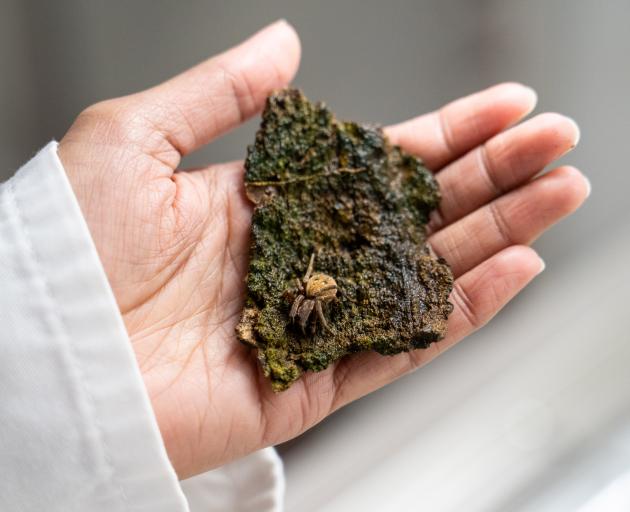Science
Parasitic Worms Transform Spiders into ‘Zombies’ in New Zealand

A remarkable phenomenon is unfolding in New Zealand, where parasitic worms known as mermithids are turning spiders into what some researchers describe as “zombies.” Usha Mendis, a PhD student at Lincoln University, is at the forefront of this study, seeking to uncover the intricacies of these nematodes and their impact on local spider populations.
Mendis’s research indicates that mermithids target a variety of invertebrates, including caddisflies, mayflies, and grasshoppers, alongside large endemic spiders. This poses a significant threat to the ecosystem, as over 90% of New Zealand’s spider species are endemic, making them crucial players in the local biodiversity. “If something were to happen to them, it would not be good for our biodiversity,” Mendis stated.
Understanding the lifecycle of mermithids is critical. The parasite alters the spiders’ behavior and physiology, ultimately leading to their demise. “When the worms take over, it flips that idea on its head,” Mendis explained, emphasizing that the parasites disrupt the spiders’ natural role in the food chain.
Identifying infected spiders can be challenging. Mendis noted that those carrying the parasite often exhibit abnormal physical changes, such as larger limbs and swollen abdomens. “They look like zombies,” she said. However, the definitive sign of infection only becomes apparent when the spider dies and the nematode emerges to continue its lifecycle.
While the exit of the nematodes from their host is well-documented, the method by which they enter spiders remains a mystery. Mendis is investigating this aspect, along with the motivations behind the nematodes’ parasitic behavior. “They can’t live without a host. They consume the energy and nutrients of the host and grow inside it,” she explained.
Crucially, the nematodes require moisture for their development, which influences the behavior of infected spiders. They often seek out wet environments, leading to a grim outcome where many spiders are found drowned. Even if a spider survives the nematode’s emergence, it is unlikely to live much longer.
In an innovative approach, Mendis is employing water traps to collect the nematodes, a method aimed at enhancing understanding of these parasites. Although mermithids have only been documented in New Zealand for the past 35 years, much remains to be learned about their interactions with local spider species.
Mendis urges the public to reconsider their perceptions of spiders, emphasizing their essential role in the ecosystem. “Spiders may look disruptive and creepy, but they’re not the enemy,” she said. “They’ve got their own problems to deal with.”
As research continues, the intricate dance between these parasitic worms and spiders highlights the delicate balance of life within New Zealand’s unique ecosystems. Understanding these dynamics will be vital for preserving biodiversity and ensuring the health of these natural environments.
-

 World4 months ago
World4 months agoTest Your Knowledge: Take the Herald’s Afternoon Quiz Today
-

 Sports4 months ago
Sports4 months agoPM Faces Backlash from Fans During Netball Trophy Ceremony
-

 Lifestyle4 months ago
Lifestyle4 months agoDunedin Designers Win Top Award at Hokonui Fashion Event
-

 Entertainment4 months ago
Entertainment4 months agoExperience the Excitement of ‘Chief of War’ in Oʻahu
-

 Sports4 months ago
Sports4 months agoLiam Lawson Launches New Era for Racing Bulls with Strong Start
-

 World5 months ago
World5 months agoCoalition Forms to Preserve Māori Wards in Hawke’s Bay
-

 Health4 months ago
Health4 months agoWalking Faster Offers Major Health Benefits for Older Adults
-

 Lifestyle4 months ago
Lifestyle4 months agoDisney Fan Reveals Dress Code Tips for Park Visitors
-

 Politics4 months ago
Politics4 months agoScots Rally with Humor and Music to Protest Trump’s Visit
-

 Top Stories5 months ago
Top Stories5 months agoUK and India Finalize Trade Deal to Boost Economic Ties
-

 Health2 months ago
Health2 months agoRadio Host Jay-Jay Feeney’s Partner Secures Visa to Stay in NZ
-

 World5 months ago
World5 months agoHuntly Begins Water Pipe Flushing to Resolve Brown Water Issue









